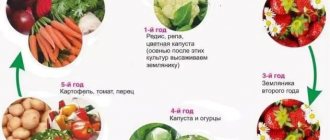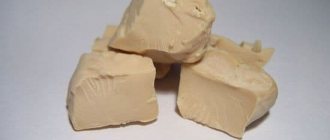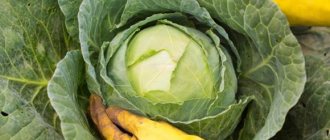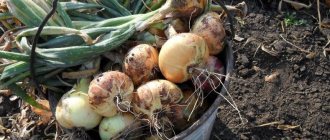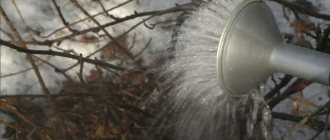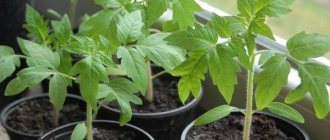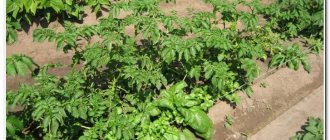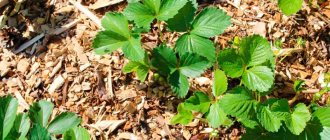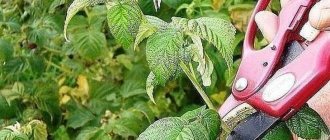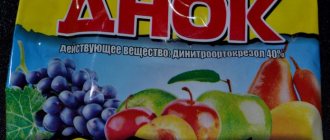If you think that after fruiting, garden strawberries (strawberries) can be left alone, then you are deeply mistaken. Many people wonder when to prune strawberries. Just after harvesting, garden strawberries should be given maximum attention, since your actions during this period determine how juicy, tasty and sweet the berries will be next year. The main thing is to carry out thorough and complete processing of strawberry plants. And if you do everything correctly, then you are guaranteed an increase in yield next season (it can range from 35% to 40%, and this is not bad at all). And you need to start taking care of the future harvest when you already need to trim the strawberries immediately after harvesting.
Caring for strawberries after harvest
In July, you harvested a wonderful harvest of berries, fully enjoyed their taste and made preparations for the winter: now you need to think about how to “thank” the strawberries so that they regain their strength and stock up on new ones. To make this happen, we do this:
- we remove dry leaves and old mulching mass from the beds: after all, it contains those pests and pathogens of various diseases that have such a detrimental effect on plants;
- we pull out the weeds;
- cut off the mustache and old leaves;
- we dig up bushes with nematodes and mercilessly destroy them (so that the disease does not spread further);
- loosen the soil not only in the beds, but also between the rows;
- water (as needed, that is, only when there is no rain for a long time);
- we carry out treatment against diseases and pests;
- We fully feed the plants;
- mulch the soil (for example, peat).
On a note! There is no need to pick or mow all the foliage from strawberry bushes: you can overdo it. Only unnecessary (that is, already yellowed and blemished) foliage must be removed.
Now let's take a closer look at each stage.
Why do you prune strawberries after fruiting?
Strawberries are perennial berry plants, so annual pruning of the above-ground parts is recommended. Removing tops (leaves, peduncles and tendrils) from strawberry bushes helps:
- rejuvenation of the plant (until autumn the bush grows new young and healthy leaves);
- protects the plant from infection by diseases and damage by harmful insects.
The last point is especially important in strawberry agricultural technology. Old leaves that grow close to the ground often show signs of disease damage by mid-summer. They turn yellow, colored spots may appear on the leaf blade, and the tips dry out, which indicates brown spot damage. Removing old foliage while simultaneously treating the plants with a fungicide solution will reliably protect the plantation from diseases.
Some gardeners are against removing foliage on strawberries if they are visually clean. They argue that a potentially healthy strawberry does not need pruning; it is enough to carry out preventive treatment of the plantation with a fungicide. Growing new greenery at the end of summer requires a lot of energy from the plant, which it could use to prepare for winter. As a result, strawberries may go into winter weakened and freeze.
The massive formation of mustaches on strawberry bushes after fruiting significantly depletes the plant. They must be removed in time if it is not planned to obtain planting material from the garden bed.
The harvest has been harvested: we prune the strawberry plants
Some people doubt whether they need to prune strawberries, maybe “it will do.” There can be only one answer: of course, it is necessary. After the harvest is harvested, we must weed the beds, removing dead leaves and all weeds. We immediately burn the cut leaves and under no circumstances send them to the compost. It’s also not worth making a layer of mulch out of them. The thing is that pests can remain on the leaves, and they themselves can be infected with diseases. When to trim strawberry leaves? In July, immediately after the final berry picking.
Important! We do not recommend performing complete (total) pruning of leaves from the bushes (we do this only in cases where the strawberry plantation has been subjected to fungal infection or pest attack). It is necessary to cut selectively (only old and drying leaf blades).
Young bushes that are only one year old should not be touched at all: let them grow and gain strength.
As for the whiskers, they must be removed, because if this is not done, then all the forces of the bush will be directed to the growth of new whiskers and flower buds: but we don’t need this, because then we won’t get berries. Moreover, we cut off the mustache as close to the center of the rosette as possible. But if you plan to propagate strawberries, then you can easily do this by digging in a certain amount of whiskers.
On a note! When to prune strawberries (that is, remove their leaves and tendrils)? The procedure must be repeated several times per season.
How to trim mustaches on strawberries
Despite the fact that strawberries are pruned in autumn, spring, and summer, we will first focus on the most popular time for pruning - the second half of summer. It is impossible to name the exact date for pruning strawberries, since each gardener is guided by the characteristics of his plants and his soil.
The often-named date - the twentieth of July - can only serve as a rough guide with which to check, but not a guide to action. Some gardeners trim the mustache until the end of August, which does not spoil subsequent harvests.
In the summer season, the mustache of strawberries is cut off after fruiting.
It is important to choose the right day for pruning, since weather conditions affect the preservation of strawberries in the future. If there is a lot of rain on the day, there is a high risk of introducing fungal infections into the plant through dampness.
If pruning takes place under the scorching rays of the sun, the strawberries will inevitably begin to experience stress. Therefore, the ideal time of day for the operation is before or after sunset.
Available materials
In order to rid strawberries of extra mustache you will need:
- Scissors with sharpened blades or pruning shears;
- Container for collected leaves and tendrils;
- Mulch;
- Special gloves.
To remove the mustache, ordinary scissors or a compact pruner are suitable.
The pruning itself does not require much effort from the gardener and is very easy to do. All strawberry leaves and mustaches are collected in the left hand, and with the right hand, using a small pruner, all excess is cut off
When removing leaves, it is important not to touch the growth point, since if it is damaged, the bush risks not surviving
Carefully inspect all bushes for possible fungal or infectious diseases, pests and other signs of deterioration. Rejected vegetation must be disposed of as quickly as possible to avoid the spread of infections throughout the beds.
Strawberries affected by fungal diseases must be disposed of, as well as their plant debris
Prune strawberries correctly
Its fertility in the next season depends on how well you prune the bushes and choose the right moment for this (that is, when it will be most effective to prune strawberries after picking the berries). We remove old leaves as follows:
- we cut them off or mow them at a height of 8-9 cm (to avoid damage to the growing points and healthy leaf mass), using a garden knife, pruning shears or scissors;
- comb out the cut leaves with a rake.
Advice! Under no circumstances should you tear off the leaves with your hands: by pulling the leaf, you can pull out either the entire bush or part of it, thereby disturbing the root system. Such actions will lead to the fact that the damaged plant, having become ill, will take a long time to recover and is unlikely to produce a large number of berries.
When is the best time to prune strawberries after harvest? Most likely, this is 8-11 days (no less) after the end of fruiting.
Caring for strawberry bushes after pruning
Removing foliage from strawberry plants is only the beginning of caring for strawberries after fruiting. To prepare garden strawberries for winter, they are fed with fertilizers, treated against pests, and watered if necessary.
Loosening
If the soil surface on a strawberry plantation is not covered with mulch, the soil must be loosened regularly. Breaking up the soil crust promotes better penetration of oxygen into the root layer of the soil.
Important! Strawberries have roots that lie close to the surface, so loosening should not be deep! It is enough to immerse the cultivator to a depth of 3-4 cm.
Watering
As a rule, the end of July and August in the middle zone are rainy, and there is no need to additionally water the strawberries. But, if the weather is dry and hot, the soil on the plantation must be moistened once every 7-10 days. Each bush consumes approximately 1 liter of water.
The water should not be cold and soft. Suitable liquid from lakes and ponds, collected rain moisture. Well and tap water should be pre-settled and heated. Many gardeners install drip irrigation systems on their strawberry beds, which significantly reduces the time spent caring for plants and saves irrigation water.
Water the strawberries at the roots, but if it is very hot, you can give the strawberries a refreshing shower every few days. Moisturizing not only the soil, but also the air has a beneficial effect on the condition of the plant. In order not to contribute to the spread of fungal diseases, shower the strawberries in the morning so that by night the moisture has time to evaporate from the foliage.
Top dressing, fertilizer
Within a week after trimming the foliage and tendrils, strawberries need nitrogen. The crop requires it to accelerate the growth of new leaves.
To enrich the soil with nitrogen, use:
- compost or rotted manure (cow, horse, goat) – 3-5 kg per 1 sq. m beds;
- infusion of chicken guano, infusing 1 kg of droppings in 10 liters of water for 2 days and diluting the resulting infusion by half with water (consumption 0.5 liters per plant);
- infusion of weeds, aged for about a week, in a concentration of 1 to 10;
- urea (urea) - 30 g of fertilizer per bucket of water, consumption 0.5 liters per bush.
Fertilizer solutions should be applied strictly at the root of the plant, after thoroughly moistening the soil with clean water. It is enough to mulch the strawberry bed with humus.
10-15 days after nitrogen fertilizing, it is useful to give plants fertilizer containing phosphorus and potassium. These elements help the root system and above-ground parts of strawberries prepare for the winter cold. Use wood ash, superphosphate, humate or potassium sulfate.
Ash from burning clean wood, hay and straw is rich in potassium, phosphorus, calcium and other elements in a form accessible to the plant. Ash can simply be scattered on the ground around the strawberry bushes, then loosened and watered. The consumption rate of ash powder is 2 cups per 1 sq. m.
You can prepare an ash solution for watering strawberries, which will have a quick and safe effect on the plants. 1 kg of sifted wood ash is poured into a bucket and hot (70 degrees) water is poured over everything. The solution is left in a warm place for 2 days, stirring occasionally. Before use, the finished infusion is filtered and diluted with water twice.
Superphosphate and potassium sulfate can be scattered around the plants directly on the ground, at a dose of 40 g and 20 g per 1 square meter. m respectively. Afterwards, the soil is loosened superficially and watered.
Potassium humate in liquid form is used to feed strawberries at the end of summer. 10 ml of the drug is dissolved in a bucket of water and the plants are watered, using 1 liter of solution per bush.
At the end of summer, ready-made complex fertilizers can be used to feed strawberries. The convenience of their use lies in the fact that all the elements necessary for garden strawberries are contained in the required dosage and are easily absorbed by the plants.
The most popular fertilizers among gardeners are:
- Hera for strawberries and wild strawberries;
- Kemira Lux for strawberries;
- OMU (organomineral complex fertilizer) from the Buyskie Fertilizers company;
- Fusco.
Dilute the preparations in water according to the instructions and water the plants at the roots.
Treatment against pests and diseases
No later than the second half of August, strawberries should be treated against insect pests and diseases. For this purpose the following drugs are used:
- Fitoverm;
- Bitoxibacillin;
- Vertimek;
- Fitosporin;
- Horus;
- Topaz.
It is better not to mix drugs against diseases and pests in one container, but to carry out two sprayings with an interval of a couple of days. Treatment is carried out in calm and cloudy weather or in the evening, trying to get the solution not only on the foliage, but also on the soil around the plants.
On a note. Adherents of folk remedies for preventing the appearance of diseases on strawberries advise treating the plantation (the plants themselves and the soil under them) with an aqueous solution of brilliant green. The pharmaceutical preparation is dissolved in water (5 drops per 1 liter) and the strawberries are generously sprayed. It is believed that such treatment will protect strawberries from powdery mildew, gray rot, and spotting.
Caring for strawberries after harvest - video
Reasons why it is imperative to trim strawberry leaves
Upon completion of fruiting of strawberry bushes, a second wave of formation of new leaves occurs, when it is simply necessary to trim the leaves of strawberries. Otherwise, all the plant’s energy will be spent only on their growth, and not on laying new flower buds. As a result, next summer you will have a lot of green leaves and very few berries.
In addition, pests try to quickly crawl from old (“tasteless”) leaves to new (“tasty”) ones and settle there. Why not? In general, we repeat once again that the most appropriate moment to start pruning strawberries is the July days (immediately after fruiting).
Strawberry mustache trimming
Now that we've dealt with the leaves, it's time to decide what to do with the tendrils that most varieties of strawberries produce throughout the warm season. The answer to this question depends on whether you need new strawberry beds in the near future or not.
If you want to replace some of the bushes with fresh ones or simply expand the plantation, then you need to let the mustaches grow, and then carefully plant the first rosettes in a separate bed, cutting off all the excess. If this is not part of your plans in the next year or two, then the mustache is regularly removed. This should be done before flowering, after fruiting and at the end of summer. You can also carefully remove growing tendrils during each loosening or weeding of the beds.
- What to do with strawberry tendrils - cut them off or leave them for propagation?
Let's figure out whether to trim strawberry mustaches.
Loosen the soil
When loosening the soil, we do not recommend getting close to the bushes to avoid damaging the root system. We loosen exclusively the row spacing, plunging the tip of the shovel to a depth of 60-70 mm.
Advice! After loosening is complete, you can please your “darlings” and cover them with fresh soil (about 20 mm high). Moreover, special attention should be paid to bushes whose root system is exposed (most often this applies to plants whose age is 2-3 years). But be careful: the soil should not get into the center of the bush.
Deadlines
The time of pruning is determined by the characteristics of a particular variety and the end of fruiting period. It is believed that approximately 3-4 days after the last berry picking of the season, you can begin the procedure.
Usually, by the beginning and middle of July, garden strawberries complete fruiting, with the exception of remontant varieties. Therefore, from approximately July 20 until the beginning of August, it is recommended to cut strawberry plantations. They take into account the climatic conditions of the area, the specifics of the variety, and the characteristics of cultivation.
The procedure can be delayed a little, but keep in mind that before the onset of cold weather (October-November), the bushes should be well formed and overgrown with new leaves, so as not to go into the winter “naked.”
On a note! Remontant strawberries are not completely pruned, as this affects the yield of the crop and shortens the fruiting time. Dried, diseased or deformed leaves and shoots are removed from such varieties regularly throughout the season.
You cannot be too late with the deadlines, as the plants will begin to develop buds. Pruning in the late period will harm the strawberries and weaken the crop.
Processing strawberries will not hurt
Chemical treatment of plants during this period will not harm the plants in any way, since during berry picking it was completely excluded (by the way, weeding was not recommended either). Especially if, when processing strawberries, you notice that some leaves look like corrugated paper: this is a sure sign that the strawberry mite is not dormant, but is doing its dirty work. In this case, we treat the plants with anti-mite devices (“Tiovit Jet”, “Fitoverm”, “Aktellik” or colloidal sulfur diluted with water), strictly following the instructions indicated on the packages.
If brown spots are found on the leaves, then most likely the plants have contracted viral diseases. We treat them with Bordeaux solution.
If the berries rot, then the plants are affected by gray rot: we spray the bushes with copper oxychloride (a popular fungicide).
Advice! Before chemically treating the bushes, we recommend removing all diseased, old and pest-infected leaves from the garden bed.
If we detect yellowish leaves (located in the central part of the plant), the thickness of the petioles of which has increased significantly, we conclude: the bushes are affected by a nematode. It is useless to take any measures in this case; sometimes even spraying does not help. It is easier to get rid of diseased plants.
Advice! After removing the affected bushes from the garden, we strongly recommend pouring very boiling water on the soil.
But, as we know, it is better to prevent a disease than to treat it. Therefore, the following can be suggested as preventive measures:
- constantly inspect the bushes and, if sick, are found, remove them immediately;
- spray the bushes and soil in the garden bed with a weak solution of potassium permanganate.
Features of seasonal pruning
The gardener independently makes decisions regarding the strawberry rejuvenation procedure, but it is necessary to adhere to the seasonal characteristics of the berry crop.
It should be remembered that the main purpose of spring pruning is to rejuvenate and renew the plant after wintering. During this period, it would be a good idea to conduct an inspection for signs of pests.
Important! If fungal diseases are detected, you should immediately remove damaged or dried strawberry leaves, in other words, carry out sanitary pruning of the plant.
There is no consensus regarding autumn pruning of strawberries. It should be taken into account that in order to obtain a good and stable harvest, it should be properly prepared for the winter. The plant must be fully formed and have healthy leaves
Manipulation, which is carried out after harvesting, is considered the most reasonable. In the remaining months before winter, the plant actively increases green mass, forms flower buds for the next fruiting period, and also accumulates reserves of necessary nutrients. If there is a need to rejuvenate the bush, it should be cut to ground level.
Video: Trimming strawberry leaves after harvest
The gardener needs to pay special attention to remontant strawberries. Complete pruning of the crop is not carried out, since this procedure leads to a reduction in fruiting time. On bushes, diseased or dried leaves should be removed, as well as late flower stalks, which will only take away the vitality of the bush and will not produce full-fledged fruits.
Fertilizing strawberries after harvest
Well-rotted compost (or vermicompost), which is poured onto the beds directly to the roots, is excellent for feeding strawberry bushes. Ash, which is scattered between the bushes, can also serve as a good top dressing (based on the calculation: 2-liter jar per 1 m² of planting).
Important! Due to the fact that wood ash does not combine well with fresh manure, you should not use them together.
Mineral fertilizing, consisting of a mixture of ammonium nitrate, superphosphate and potassium sulfate (in a ratio of 1:3:1), diluted in water, is also not prohibited.
Treatment and feeding after pruning
After pruning, the soil must be loosened and moisture is added on an ongoing basis. Since the peak of the strawberry growing season (namely, the growth of tendrils and leaves) occurs in the spring, this is when it is worth taking special care of it. With good care, the bushes will quickly grow green mass and begin to bloom.
It is recommended to trim strawberry tendrils, and some of them can be used to propagate strawberries
The main question that interests gardeners after pruning strawberries is how to protect them from parasites and bacteria? The answer is simple - improvised materials and chemicals will help you! You can start by watering the trimmed bushes with warm water and potassium permanganate. This solution should have a faint pink color. Next, we spray charcoal or ash over the bushes, which must be finely crushed. Repeated spraying is carried out after two to three days.
If weevils or other pests have been noticed on the plants, use the drug “Intavir”, which is used for double treatment.
To support plants after pruning and speed up the formation of flower buds, it is enough to feed the bushes with universal fertilizers, which can be found in any garden store. Dilute them in water at the rate of 10 ml per 10 liters of water. Nitrogen compounds together with ammonium nitrate will also be a good help for plants.
Photo gallery of strawberry care products
"Intavir" destroys a significant number of pest species
Universal and useful potassium permanganate
Charcoal for sprinkling bushes and soil
Wood ash for dusting bushes and soil
No experiments, only proven techniques (video)
Considering that any pruning for a living plant is shock therapy, there is no room for experimentation here. You should not try in practice a variety of new methods of pruning bushes when there are long-tested and approved options for how to do this.
There is a category of people who are convinced that strawberries do not need any pruning. They explain this by saying that leaves are the main source of photosynthesis in a plant, and without them it will lose its strength and will not be able to survive the winter. In addition, this method does not work against pests either - they will simply move from the leaves to the ground and wait for their chance next season.
If strawberry leaves are not trimmed in time, there is a high probability that similar spots may appear on them, signaling a disease.
One can argue with this, since leaving the leaves in place after harvesting, you can often observe their reddening, browning and other color metamorphoses, which are not at all pleasant for the plant. Pests and fungal spores love to settle on old leaves, and from there spread to young ones, gradually destroying entire bushes. In addition, no one has stopped treating the soil with fungicides and pest control agents, so they are unlikely to be so comfortable in the ground while waiting for new food.
It is recommended to trim strawberry tendrils in the summer - this way you give the plant the opportunity to direct all its strength into the leaves and prepare for cold times. Most of the whiskers will simply have to be thrown away, but the strongest and most reliable ones can be used to propagate strawberries.
As for cultivating the land, water with potassium permanganate and ash from different tree species can be an excellent combination. This technique is used when transplanting a diseased bush or when a healthy bush is planted in the place where diseased plants grew. The same should be done after regular pruning of bushes.
Is it possible to mow all strawberry leaves?
Not long ago, walking along my dacha street, I saw that my friends were mowing strawberry leaves with a scythe. Their berry plot is large - several hundred square meters - and they believe they can’t do it without a scythe. At first I thought that this was their way of deciding to get rid of the old strawberries, saying that it was time to start a new plantation. But it turned out that everything was wrong. The owner of the dacha said that they mow down the strawberry leaves every year three to four weeks after the last harvest. But this year, some circumstances prevented them from doing it on time and they mowed in mid-August. According to them, their strawberry harvest is always good, and they get sick less often.
If you have a large plantation and it is older than 3-4 years, then you can follow the example of my friends.
There is another reason for completely cutting off strawberry leaves with a scythe or pruning shears (scissors) - this is severe damage to the plantings by diseases and pests. After completely cutting off (mowing) the leaves, the plantation should be treated with some fungicide or pest control drug. Be sure to feed your strawberry - help it grow leaf mass faster.
There is no need to mow young healthy strawberry plantings; this depletes the bushes and you deprive yourself of the harvest.
Protection from pests and diseases
Healthy and strong garden strawberry bushes will withstand the winter and produce a good volume of berries next year. If there are diseased or pest-affected plantings on the beds, then after fruiting and pruning they must be treated with fungicides and insecticides.
A dangerous enemy of culture is the strawberry mite. For pest control and prevention, Karbofos and acaricide solutions are used:
- Thiovit Jet;
- Kleschevitis;
- Actellik.
A solution of colloidal sulfur, a granular substance of inorganic origin, helps prevent fungal infections. But it must be used in warm weather, otherwise the effectiveness of the drug is reduced. Spraying the bushes with Bordeaux mixture also gives good results.
Metaldehyde helps in the fight against snails and slugs that become active in damp weather. The granules are scattered between the rows, lightly embedded in the soil. In addition to it, dry mustard powder mixed with hot pepper and dusting with wood ash are used.
Proper and timely pruning of strawberries will allow the plants to rest after fruiting and quickly form new shoots. Stronger, healthy plants will easily endure the winter and will again delight you with a high harvest next year.
Best time
Another topic of debate is the time to prune strawberries. People often agree that this time occurs somewhere around July 20th. In fact, there is no particular specificity here and there should not be. Only one fact is important - by winter the bush should have time to form well and become overgrown with greenery. And this despite the fact that all its leaves were cut out. Often it is enough to simply cut off old leaves, as well as those that look weak and sickly.
Another date is associated with the beginning or middle of August, when the fruiting period completely ends. At this time, choose a quiet day without bright sun, either morning or evening.
For pruning, only the sharpest tool is selected, be it scissors, pruning shears or something else. This way you can carefully cut off the leaves without causing damage to the bush. By the way, only leaf blades without petioles are cut off, so that ten centimeters of the bush remain sticking out above the ground. Thanks to this approach, the growth points of strawberries are preserved, and next year you can safely expect healthy flowering and then fruit-bearing strawberry bushes.
For pruning, it is best to choose pruners or scissors. The main condition is that they must be well sharpened
Hilling strawberries
The fact is that strawberries are a perennial berry plant. Over time, it builds up an aerial root system and begins to seem to stick out of the ground. Every year, especially after 3-4 years of growing in one place, we are forced to add mulch, soil, compost, rotted manure into the rows, thus covering the strawberry roots. Mulching and hilling helps roots develop well.
